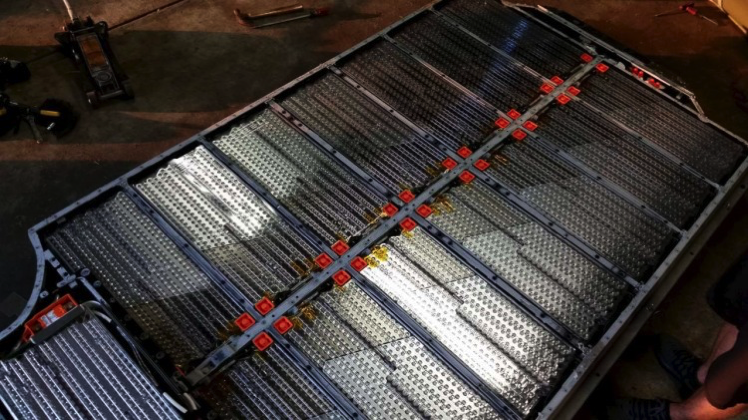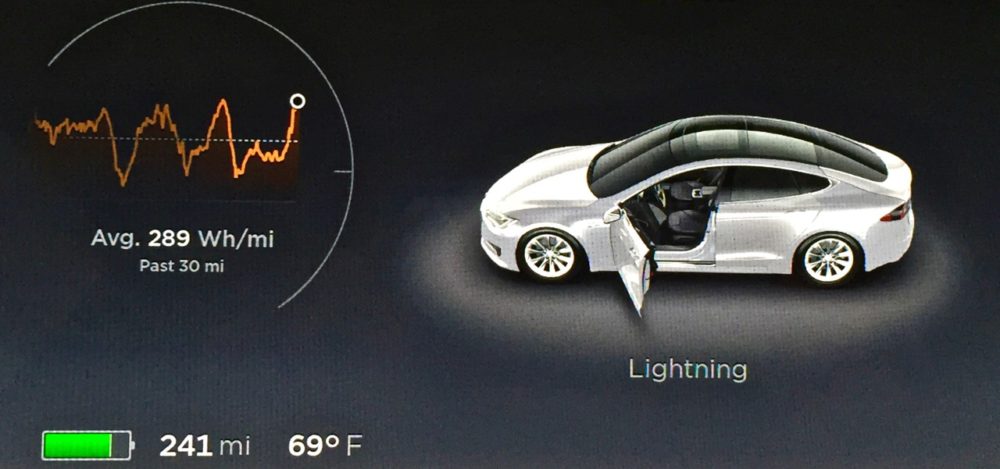
Ordering my car on April 1 was just the beginning of my Tesla odyssey.
When you order a Tesla, you automatically get 7 days during which you can change your order without penalty. And over the weekend of April 1, I began to wonder if I’d ordered the right car.
What started me having second thoughts was that my Tesla salesperson notified me that a silver fleet vehicle (I was insisting on the metallic silver paint, which is rather uncommon for Teslas) car that was configured almost identically to what I had ordered had become available. There were, however, a few differences:
- It had 2,049 miles on the odometer already. The car had been delivered on December 31, 1995 to Las Vegas for use in Tesla’s fleet of demos and loaners, so it already had some miles on it.
- It would come with a $6,800 discount. Because it was a fleet vehicle, it would be sold as new, but would be discounted off the list price.
- It had a 90 kWh battery and a panoramic roof option. I had ordered a 70 kWh battery without the fancy glass roof, but I could get roughly 28% more range by buying this fleet vehicle and paying a bit more (well, really about $13,000) than what I ordered. Given that the value of an electric car is in many ways tied to its range, this was tempting even though it was more.
- It was available immediately. If I were to buy this vehicle, I’d only have to wait for it to be shipped to me from Las Vegas. Compared with the 6 to 10 week waiting period for a custom build, this was also tempting.
I asked my salesperson if he could hold the car over the weekend while I thought about it. He said he couldn’t; because of their discounts, fleet vehicles rarely were available for more than a day or two. So I said I’d hold off, but ended up calling back the next day and asking if the fleet vehicle was still available. As my salesperson had noted, this was too good a deal to last long–it had been sold within hours of being listed. So I was back to my custom order.
There was only one problem: the opportunity to buy a big battery car had now whetted my appetite for a max-range vehicle. The S70D was rated at around 240 miles range while the S90D was 293. That extra 50 miles seemed like a nice margin to have because:
- Most of our foreseeable trips were in the 250 mile range. When we looked at our travel patterns over the past few years, we’ve been driving to colleges such as the Culinary Institute of America (200 miles), The University of Vermont (240 miles), and the University of Maine (256 miles). With a 250 mile battery, those will all demand at least one supercharger stop. With a 290 mile battery, one stop would be enough, and if we had to, we could hypermile the entire trip without a stop.
- You never drive in optimal conditions. Just as you rarely get the advertised fuel efficiency in an internal combustion engine car, similarly, you rarely get the full range out of your battery either. Once again, the big battery would just give us more comfort driving in winter or during bad weather when we really don’t want to get out of the car.
- We’ll mostly be using 60% of the battery’s capacity. You get the longest life out of an electric car battery if you run it primarily between 80% and 20% charge. That means that if we have to drive the car for an unanticipated trip, the expected range for the S70D will be more like 144 miles for the S70D and 176 miles for the S90D. Admittedly, we still would have 50 to 60 miles in reserve in both cases, but it seemed more prudent to have our everyday range be closer to 200 miles than 150.
- A big battery charges faster. This was a little non-intuitive, but it makes sense. Charging at a supercharger on the road happens fastest up to the 80% mark. After that point, the charging rate decreases rapidly to avoid overcharging the battery. What this means is that when we are traveling roughly 200 miles between superchargers (they are often closer together than that), we’d be spending longer at the supercharger stations with the small battery than with the big.
- The battery will degrade with time. The small battery will be just fine the first year we own the car, but we know that batteries degrade over time. If I assume that the battery will degrade about 3% a year (I made up that number), then I’ll have only 86% of the original battery capacity in 5 years. Given that I kept my last car for 15 years, a bigger battery to start will give me more lifetime to the car without being range constrained.
Ok, so maybe I overanalyzed this a bit. But at the end of the day, I decided that if I was going to invest in going electric, I should commit fully to having the best electric experience I could.
As it turned out, Elon Musk confirmed that we’d made the right decision not to get the fleet vehicle. Along with the Model 3 announcement on March 31, Musk announced that the Model S was getting a minor facelift, some new features had become standard, and the prices were going to increase slightly. Anyone with a model S already on order would get these new features at no extra cost. And I had an order in the system.
After all my battery analysis over the weekend, I changed my order to an S90D on Monday, and by that Friday, my order was committed to the factory order and provisioning queue. Now the waiting really began.
